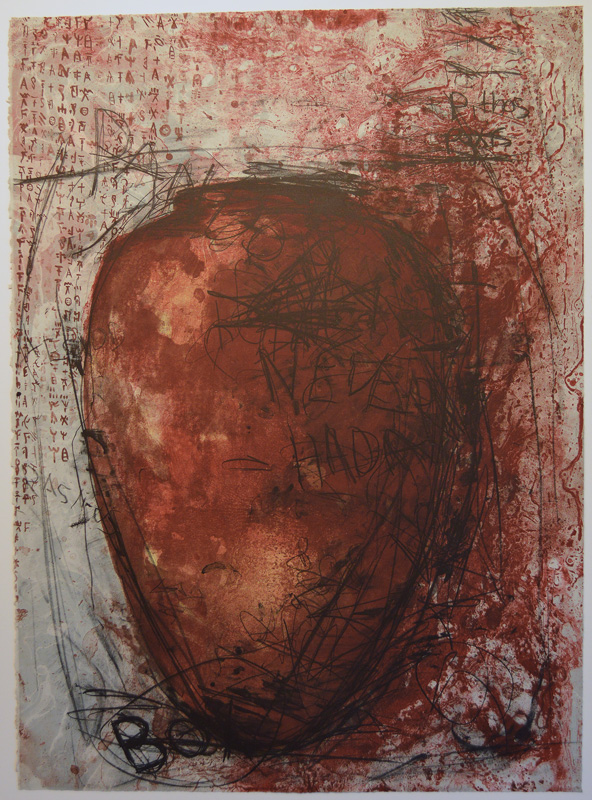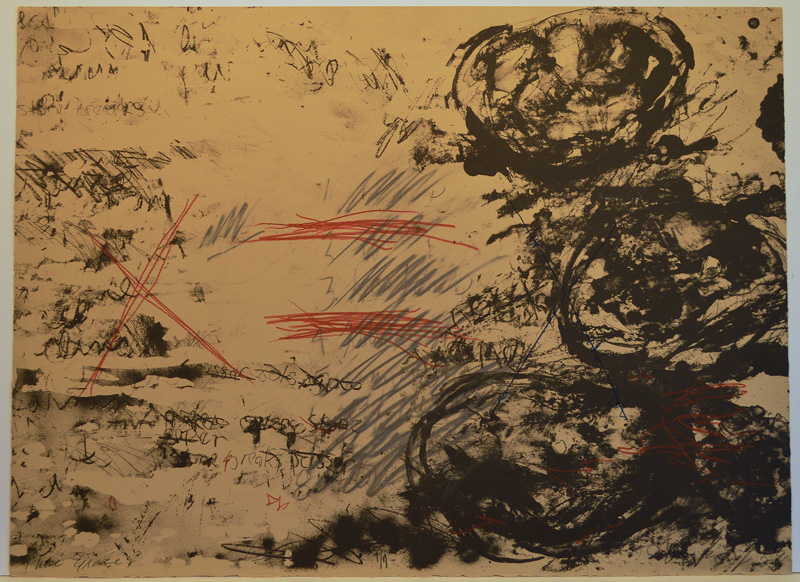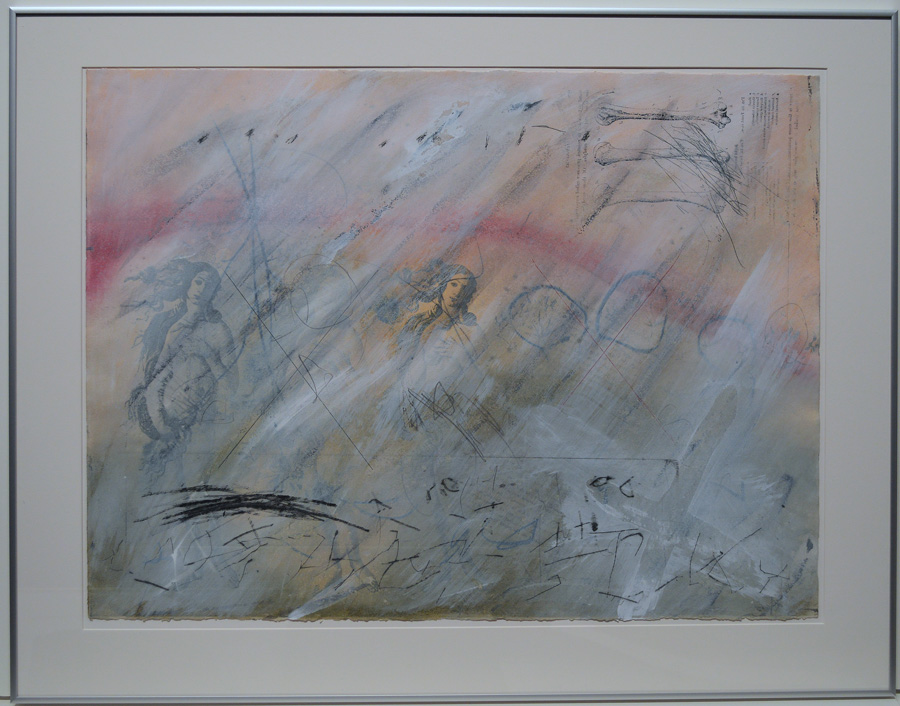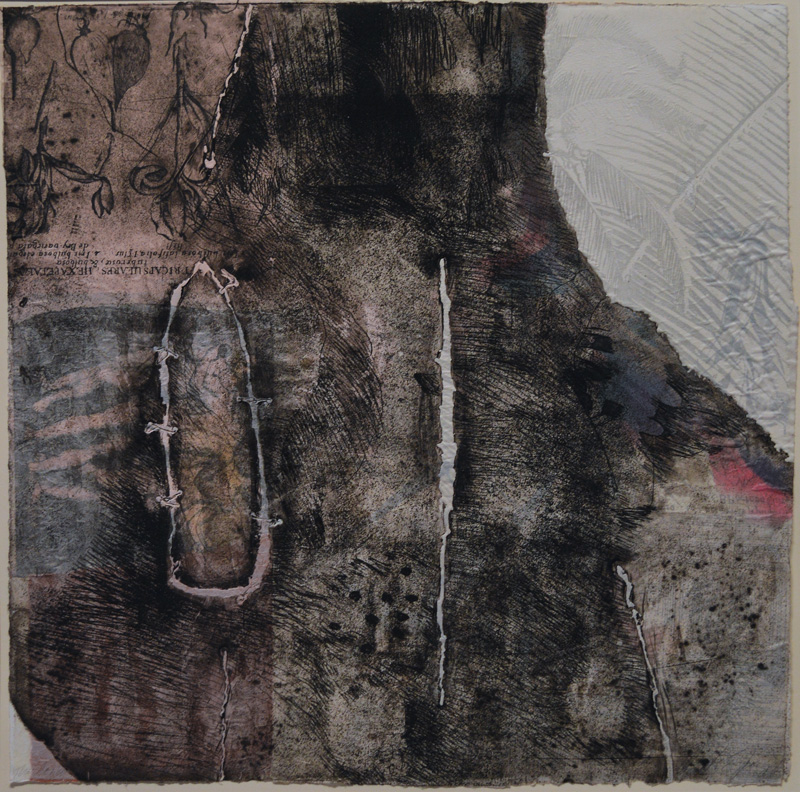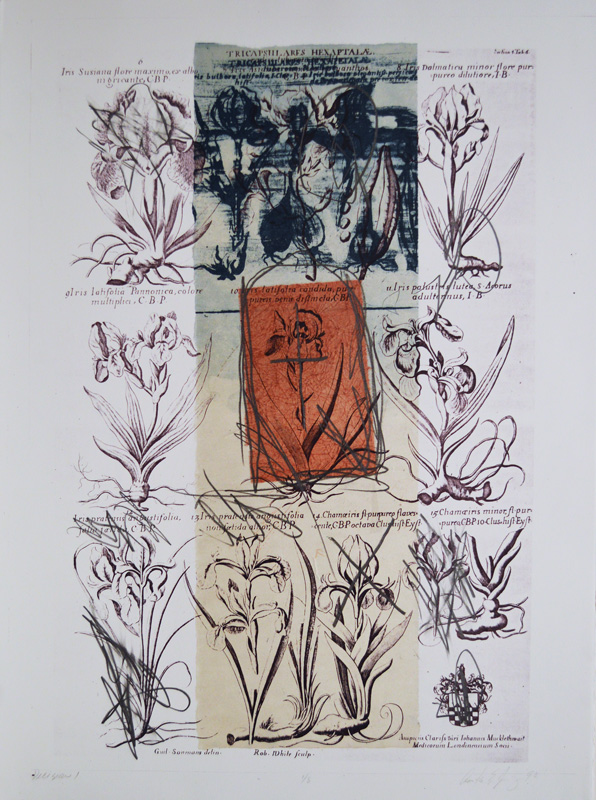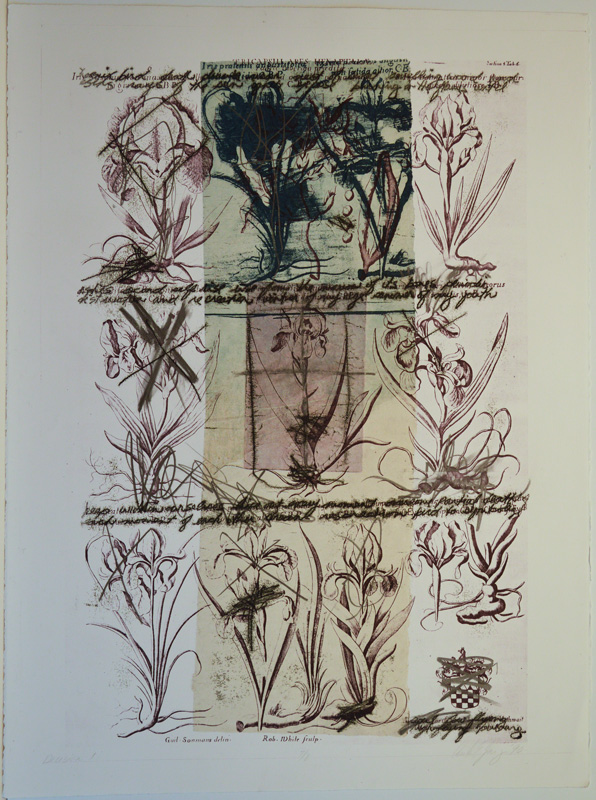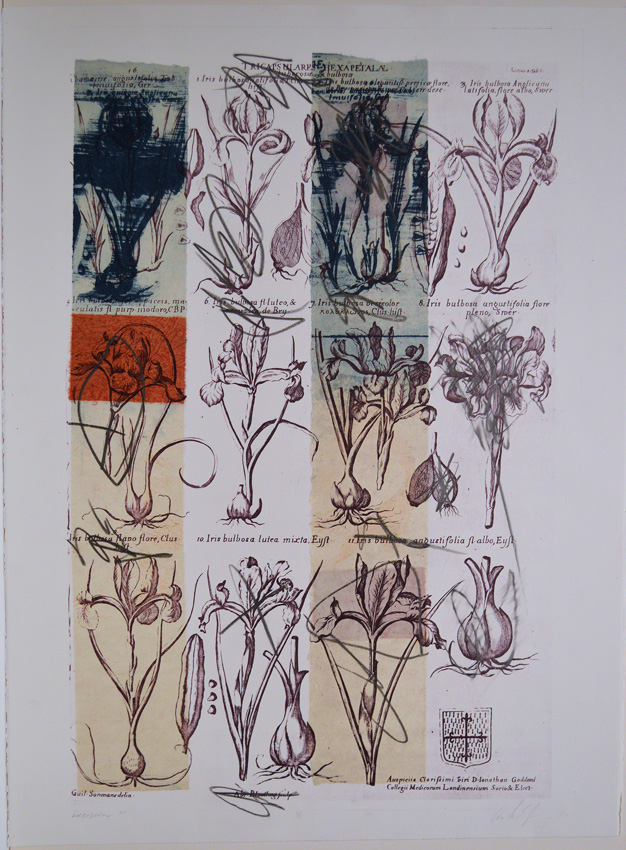Anita Jung is the Professor of Intaglio and Print Media in the University of Iowa’s School of Art & Art History (CLAS). While getting her MFA from the University of Wisconsin-Madison, she worked as a fine art printer at Professor Bill Weege’s Off Jones Road Print Shop and the University of Wisconsin’s Tandem Press. Jung’s interdisciplinary collaborative work began as investigations regarding violence toward women. She created several major pieces and events at such venues as SPACES in Cleveland, Ohio, and The Peace Museum in Chicago. She is a trained Rape Crisis Counselor and Domestic Violence Advocate. Through these experiences Jung’s work transitioned to focus upon creative actions intended to build stronger communities and a better world. She directs the Obermann Center ArtCart Working Group, a group striving to create a fellowship program invested in seeking out Iowa artists to preserve their work for future generations. Anita Jung's works of art are semi-autobiographical, deriving their narratives from the everyday. She is particularly interested in materials that transform the mundane into something special that produces a feeling of the familiar but becomes disorienting, a displacement of mind/body and time. She is interested in aspects of the ephemeral, the overlooked, the discarded, the backgrounds of our lives. Through exploring this aspect of the domestic sphere, the manifestation of nostalgia and longing come into focus only to re-dissolve into abstraction. They remain intangible, allusive and fleeting, yet incessantly present. Her art has been exhibited in juried, invitational and one-person exhibitions throughout the U.S. She has also exhibited work in Argentina, Iceland, Puerto Rico, China and most recently in Poland. Her work is in numerous National and International public collections.
As art critic Yoon Soo Lee observed many years ago when introducing an exhibition of her works, “Anita Jung's art has been influenced by her life experiences; an upbringing on Chicago's Irish-Catholic south side, entering adulthood in the southwestern United States to her current parenting adventures in southeastern Tennessee. Her work utilizes printmaking, drawing and painting as media in order to juxtapose images. Her process relates to the concepts in her work dealing with the domestic realm of feminist and religious ideologies regarding veiling (covering/ uncovering), beauty(the decorative), nostalgia, and the cliché. By combining image fragments from art historical, social, personal, botanical and religious symbols she excavates, creates and records secret histories. Anita Jung's works of art are semi--autobiographical, deriving their narratives from the everyday. She is particularly interested in materials that transform the mundane into something special that produces a feeling of the familiar but becomes disorienting, a displacement of mind/body and time. She is interested in aspects of the ephemeral, the overlooked, the discarded, the backgrounds of our lives. Through exploring this aspect of the domestic sphere, the manifestation of nostalgia and longing come into focus and re-dissolve into abstraction. The desired remains intangible, allusive and fleeting, yet incessantly present. ”
Anita Jung statement: “The role of beauty as well as the human impulse to beautify compels my works of art. The ephemeral nature of beauty, how it intersects with the manifestation of various power structures and binary gender codes and how the minutia of detail poses as the illusion of choice is the heart of my art. Commercially-made print stencils, collage elements and appliqués to denote a return to craft materials I used while growing-up are visible throughout the work. In a broad sense these materials reference women’s involvement in historical and contemporary craft practices. They allude to the secret histories of domestic lives, as well as referencing the tradition of domestic advice.
"Many of us share the suburban memory of craft objects and their association to materials that transformed the mundane into something special. Decoration through its intent has a lack of permanence; it is seasonal, it denotes a passing holiday, occasion or event. How decoration is implemented shows individuality, and personal taste. The motivation that causes us to decorate is fascinating especially when combined with the minimal genius of a hardware store paint chip.
"Embellishment is a way to take notice, to make distinctions, and to appreciate; it is often connected to the bitter sweet and the pure pleasure of beauty. More accurately they are both nostalgic and pretty. Many of the materials I use are visually pleasing in their natural state. Much of our contemporary sense of design and beauty date back to the art of the Renaissance, and I respond to these images because they are of a familiar language. For over a decade Botticelli’s Primavera has particularly captivated my attention. Its layers of symbolism and its prevalence within the consciousness of popular culture makes it a compelling reference.
Her recent work is grounded in the tradition of the readymade and art as an everyday opportunity for transformation. Issues concerning making and waste, relationships between technology, machine and the human hand inform her work. For the past three years she has reclaimed the castoff materials from those using a laser cutter as well as backing boards from a CNC router. She considers this an active collaboration with the quasi-anonymous occupants of the studio where she works. These waste materials generated and mediated through technology record incidental marks from other projects that she then repurposes through printmaking.
"Craft usually implies skill but in my case it has led me to an accessible and rudimentary way of creating repeatable icons. These matrices make no attempt to hide what they are or how a thing was made: their technology is fundamental, immediate and direct, they are the fastest and most available of tools, and their implementation is evident and readily understood. They are irreversibly intertwined and attached to my sense of the feminine, make-believe, memory and sentiment. They are rich with pleasurable references to nostalgia and the cliché.”
Her art has been exhibited in juried, invitational and one-person exhibitions throughout the U.S. She has also exhibited work in Argentina, Iceland, Puerto Rico, China, Poland and India (for details, see lists below). Her work is in numerous National and International public collections. She directs the Obermann Center ArtCart Working Group at the University of Iowa, a group striving to create a fellowship program invested in seeking out Iowa artists to preserve their work for future generations as well as being a founding member of the Printmaking Legacy Project a national organization committed to documenting the history of printmakers for future generations.
Anita Jung's works is in a number of public collection both in the U.S. and abroad. The list includes (alphabetically by location), U.S.: The Huntsville Museum of Art (Huntsville, Alabama); Arizona State University, Department of Art, Tempe, Arizona; Janet Turner Print Museum, California State University, Chico; California, San Francisco State University, California; University of Colorado Special Collections, Boulder, Colorado; Denver Museum of Art, Denver, Colorado; University of Florida, Gainesville, Florida; University of Miami, Coral Gables, Florida; SGC-International Archive, Georgia; University of Georgia Museum, Athens, Georgia; Anchor Graphics, Chicago, Illinois; Milikin University, Decatur, Illinois;Normal Editions Workshop, University Galleries, and Women's Center, Illinois State University, Normal, Illinois; Chase Special Collections Center, Bradley University, Peoria, Illinois; Collum-Davis Library, Bradley University, Peoria, Illinois; Cradle Oak Press, Bradley University, Peoria, Illinois; Heuser Art Center, Bradley University, Peoria, Illinois; Graphic Chemical and Ink, Inc., Villa Park, Illinois; University of Notre Dame, Notre Dame, Indiana; University of Iowa Museum of Art, Iowa City, Iowa; University of Iowa Hospital + Clinics, Project Art, Iowa City, Iowa; Fort Hays State University, Hays, Kansas; McNeese State University, Lake Charles, Louisiana; Lily Press, Rockville, Maryland; Pyramid Atlantic, Riverdale, Maryland; University of Minnesota, Minneapolis; Mississippi Museum of Art, Jackson, Mississippi; SGC-International Archive, Oxford, Mississippi; Lauren Rogers Museum of Art, University of Mississippi, University, Mississippi; Washington University, St. Louis, Missouri; Richard F. Brush Art Gallery, St Lawrence University, Canton, New York; Center for Book Arts, New York City; Akron Art Museum, Akron, Ohio; The Kennedy Museum, Ohio University, Athens, Ohio; Butler Museum of American Art, Youngstown, Ohio; Oklahoma State University, Stillwater, Oklahoma; University of Maine Museum of Art; Palmer Museum of Art, University Park, Pennsylvania; Hunter Museum of Art, Chattanooga, Tennessee; Carol Reece Museum, East Tennessee State University, Johnson City, TN; Ewing Gallery of Art and Architecture, University of Tennessee, Knoxville, TN; HGTV, Knoxville, Tennessee; Tennessee Arts Commission, Nashville, Tennessee; Tennessee State Museum Collection, Nashville, Tennessee; University of Texas, Tyler, Texas; Harris Fine Art Center, Brigham Young University, Provo, Utah; University of Utah, Salt Lake, Utah; Hand Print International Workshop, Alexandria, Virginia; Corcoran, Washington DC; West Virginia University, Morgantown, West Virginia; Lawrence University, Appleton, Wisconsin; Madison AIDS Support Network, Madison, Wisconsin; Madison Art Center, Madison, Wisconsin; Sonic Foundry, Madison, Wisconsin; University of Wisconsin – Madison. Department of Art; University of Wisconsin – Madison. Wisconsin Union; Utah Museum of Fine Arts, Salt Lake City, Utah.
International Collections include: Proyecto'ace Gallery, Buenos Aires, Argentina; RMIT University, Melbourne, Australia; Brussels Bibliotheque Royale Albert I, Department of Prints, Belgium; KIOSKO Galeria, Santa Cruz de la Sierra, Bolivia; Museo Nacional de Arte, La Paz, Bolivia; Museu Nacional de Artes, Rio de Janeiro, Brazil; University of Alberta, Edmonton, Alberta, Canada; Hollar Gallery, Prague, Czech Republic; Estonia Academy of Art, Tallinn, Estonia; Dresden Academy of Fine Arts, Department of Prints and Drawings, Federal Republic of Germany; Turku Art Museum, Turku, Finland; Bibliotheque Nationale, Paris, France; Hong Kong Museum of Art, Department of Prints, Hong Kong; Chhaaps Institute for Printmaking Trust, Vadodara, India; Navsar, New Delhi, India; India Habitat Center, New Delhi, India; Academy of Fine Arts, Poznan, Poland; Stichlind Museum, Suriname; National Museum of Trinidad, Trinidad; Zayed University, Dubai, UAE; Museo Nacional de Bellas Artes, Caracas, Venezuela.
We first met Anita Jung in 1989 when she was getting her MFA at the University of Wisconsin–Madison. Several of the faculty in the Art Department recommended her to us as a brilliant and exciting printmaker. When she showed us her work, we quickly agreed. Her work is dense, provocative, challenging, and highly creative; many of her prints pushed the line between original print and original, many others crossed over and became unique mixed-media works. In all of her works, there is a sense of mastery, a feeling of control and purpose, and most achieve a deeply satisfying sense of completeness. When we began showing her work, we quickly found that many viewers shared our feelings, and before she finished and left Madison, we had purchased many of her works and sold a number of them. Normally, we only show works by internationally or nationally prominient artists; in her case, we made an exception and expected her to move into the ranks of the most innovative and aesthetically satisfying printmakers, particularly among the group of those who have a strong sense of what they need to say and who succeed in saying it powerfully. Now, 14 years later, we are showing several of her pieces in our current show next to works by Joan Snyder, Suzanne McClelland, Jennifer Bartlett, and Susan Crile—artists in whose company her works feel quite at home. Another is sharing a wall with works by Hollis Sigler, Helen Frankenthaler, Joan Mitchell, Lee Krasner, and another Joan Snyder. Again, her work fits in very nicely as the work of a master of equal power.
|
|
